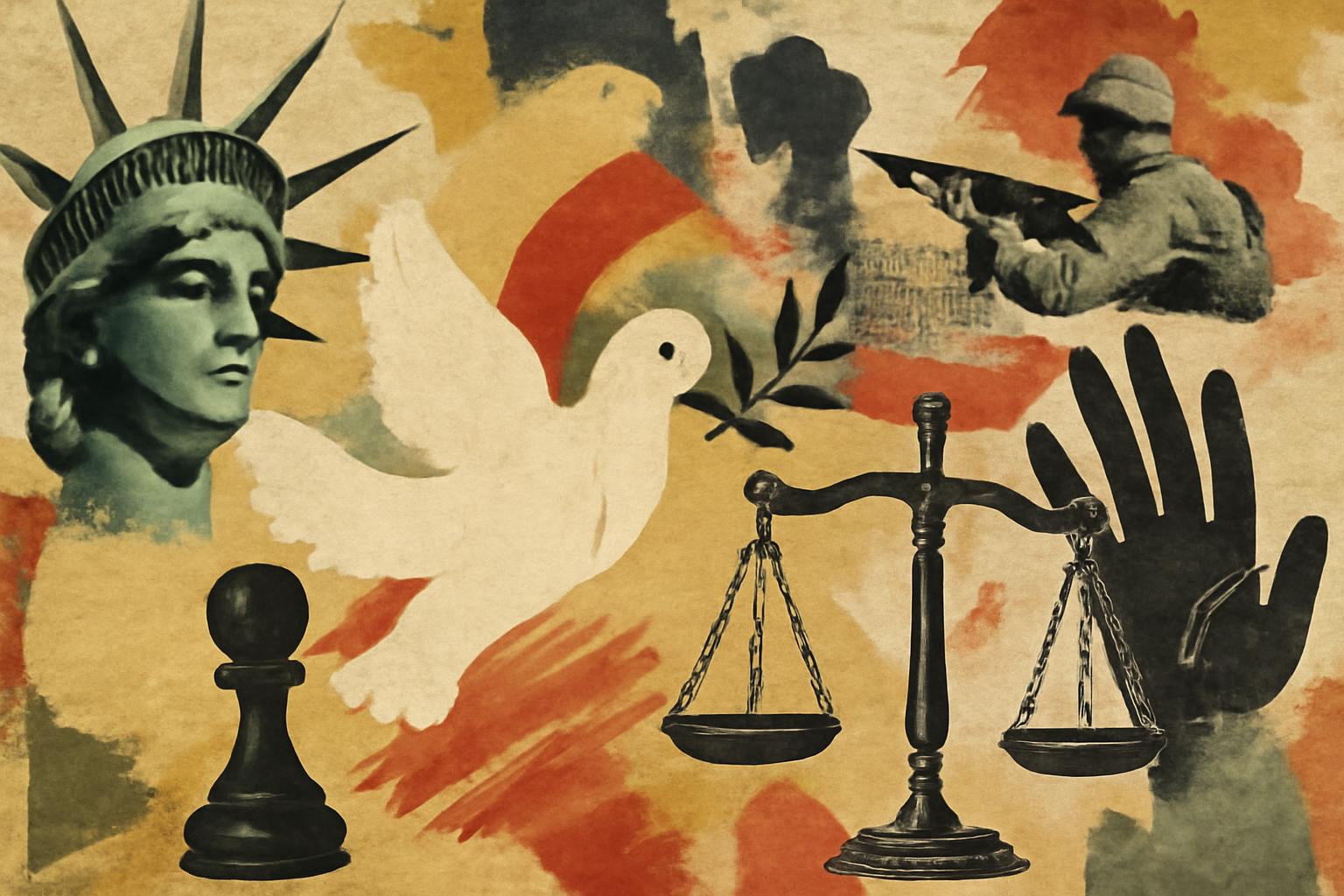Thousands of Israelis walked off the job in a nationwide strike to demand an immediate end to the Gaza campaign and a direct effort to secure the release of hostages. Cafés and shops closed, theatres paused, and portraits of the hostages filled Tel Aviv’s spaces; the protests are a visceral reminder that state violence can’t be moralized into virtue by calling it “defense.” Security forces answered with arrests and water cannon as the government widened its Gaza operation and prepared to seize Gaza City and Al-Mawasi, promising civilian relocations. The hostage situation remains fluid, with officials admitting only roughly 20 or so may be alive among the roughly 50 still in Hamas hands, while Hamas released videos of two emaciated captives that drew global concern. The backdrop is a near-fifteen-year-old torment: a 2023 Hamas assault that killed about 1,200 and abducted 251, followed by episodic mediations and stalled ceasefires. Underneath the rhetoric, the logic is brutal: more power for the state, more coercion, more wartime planning masquerading as policy.
The hostages are individuals with rights, not pawns in a bargaining game. Nozick’s rights theory says people own themselves and their lives; the state’s duty is to protect those rights, not to instrumentalize hostages to extract concessions from adversaries. Rand would insist that you don’t sacrifice a single person’s rational life to political ends; any policy that makes hostages a currency corrupts the very meaning of justice. The libertarian stance is clear: pursue peaceful, voluntary diplomacy, private humanitarian efforts, and targeted, non-coercive protection for innocents—without turning civilians into leverage in a dynastic game of power.
War as central planning dressed in legitimacy. Hayek’s critique of central planning applies just as fiercely to a war cabinet as to an economy at peace: knowledge is dispersed, consequences are unpredictable, and coercive command increases the costs of misjudgment. The moment a government asserts it can “manage” a war from the top is the moment liberty is sacrificed on the altar of emergency. Widening the campaign, promising evacuations, and relocating civilians may sound decisive, but it mirrors the classic road to serfdom: more power concentrated, fewer choices for individuals, more room for bureaucratic error, and less accountability when errors ruin lives.
Civil liberties are not optional in wartime. The sight of water cannon against crowds and arrests in a moment of crisis is not just a tactical miscalculation; it’s a test of the state’s commitment to the rule of law. Rand would demand that the defense of rights include protecting peaceful dissent and resisting the impulse to make security a pretext for suppressing assailants’ own civil liberties. A minimal state protects individuals, not narratives; a robust, centralized war state tends to confuse security with control and calls it virtue.
Labor and civil society as the true limit on state power. The Histadrut’s cautious support—without fully endorsing a government line—exposes a grain of libertarian hope: civil society can exist and operate with minimal, not maximal, coercion. Voluntary associations, private mediation, and market-like pathways to reduce conflict are the antidote to a politics that reflexively escalates state power in times of fear. The state should not coerce unions into line nor pretend that a single political authority can harmonize competing moral claims in the fog of war.
The moral hazard of existential crisis politics. Hayek warned that crisis justifies creeping intervention; Nozick warned that the state’s power is not neutral and that emergency powers tend to outlive their champions. The more a society normalizes emergency measures as routine governance, the more it normalizes coercion as a permanent tool. A libertarian response is not to deny danger but to insist that liberty does not bow to danger; it survives danger by dispersing power, elevating voluntary association, and prioritizing non-coercive means of defense and diplomacy.
A path forward grounded in liberty, not propaganda. If the goal is the safety of innocents and the restoration of peace, the route is narrow and principled: defend rights through narrowly defined, nonviolent means and targeted, private defense mechanisms; limit the state’s prerogative to commandeer entire economies, suspend civil liberties, or weaponize civilian disruption as a bargaining chip. Embrace nonaggression, free exchange, and private diplomacy with a clear emphasis on protecting individual life and liberty rather than enshrining state power as the ultimate instrument of policy.
In the end, this is not about who fights better or who wins the next round of negotiations. It’s about whether a society will permit coercive state power to be the default instrument in times of fear, or whether it will reassert the primacy of individual rights, voluntary cooperation, and the rule of law. Hayek, Nozick, and Rand all point to the same conclusion: liberty flourishes only when the state is restrained to the protection of rights, when wartime expediency does not redefine civilization, and when citizens—armed with reason and voluntary association—refuse to surrender their sovereignty to a centralized authority that promises security but delivers subjugation.
